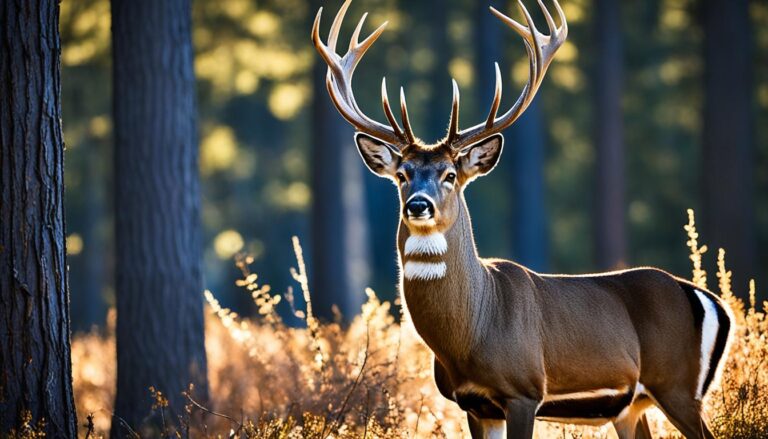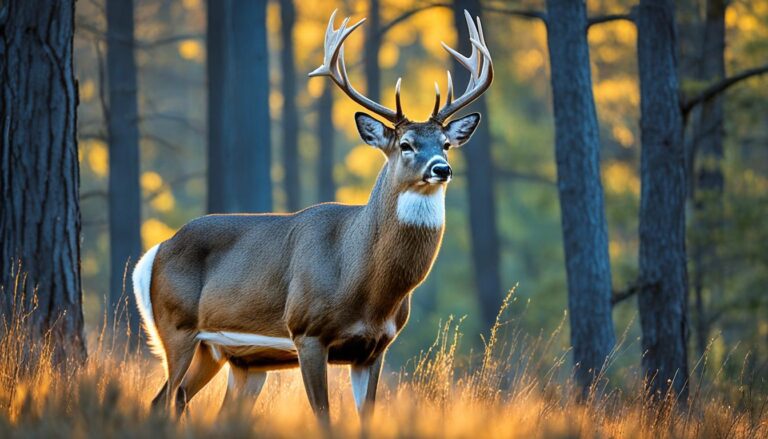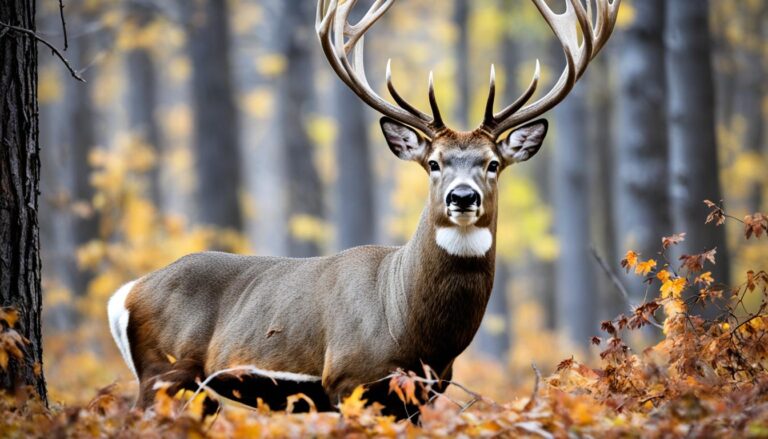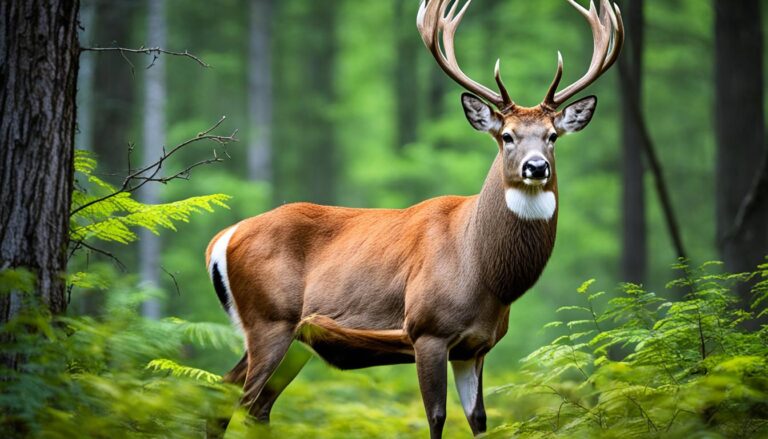Where Do Whitetail Deer Sleep?
Question: Where do whitetail deer sleep?
Answer: Whitetail deer are crepuscular species, meaning that dawn and dusk are when they are most active. In isolated locations known as bedding grounds, they repose for the most of the day. For bedding purposes, whitetail deer like densely vegetated habitats like woods, brushy regions, or tall grasslands. They often establish repeat beds in the same spot, creating a network of trails and depression in the vegetation.
Here are some of the specific types of locations where whitetail deer sleep:
- Thickets: Areas with a lot of flora, such honeysuckle vines or blackberry bushes, are known as thickets. Due to the excellent shelter that thickets provide from predators, deer often choose to sleep there.
- Tall Grasses: In open regions, particularly, tall grasses may provide sufficient shelter for deer to rest.
- Beneath trees: Occasionally, deer may make their nest beneath trees, particularly those with thick foliage.
- Along fencerows: Deer often choose ideal places to lay down among fencerows because they may provide protection from wind and predators.
- Riparian Areas: The plants found along streamsides may serve as ideal deer bedding sites.
- Agricultural regions: Deer have been known to sleep in agricultural regions, particularly in fields that are fallow or have tall crops.
- In abandoned buildings: Deer sometimes take up residence in sheds or barns that have been abandoned.
A deer’s bedding area may be found at a different area according on the season, the weather, and the activity of predators. For instance, in order to benefit from the sun’s warmth during the winter, deer may choose to sleep in more exposed locations.
Here are some additional factors that influence where deer sleep:
- Predator Avoidance: Deer choose bedding areas with dense undergrowth or high land to shield them from predators.
- Human disturbance: Human activity also causes disruption to whitetail deer. They will thus often choose a place to sleep that is apart from human activities.
- Wind Protection: In colder or wetter weather, deer like sleeping areas that are shielded from the wind.
- Thermoregulation: Depending on the weather, deer may choose their bedding areas by looking for sunny or shaded areas in response to their desire for warmth or cooling.
- Food Sources: Since deer typically eat in the early morning or late afternoon after resting, they may take this into account while selecting their bedding grounds.
Depending on the environment and season, whitetail deer will sleep in different spots. For instance, in order to remain cool during the summer, deer often sleep in shaded regions. To remain warm over the winter, they often take up residence in places with plenty of vegetation.
Hunters may improve their odds of success in the field by better predicting the movement patterns of whitetail deer by knowing the elements that affect where they sleep.
Conclusion
Whitetail deer rest in sanctuaries, protected from hunting by dense woodland tracts, uneven properties, or difficult access. They may also hide in marshes, swamps, and hidden bedding sites beneath water-surrounded trees, where hunting is rare. These sanctuaries and low-pressure zones help hunters plan effective morning hunts and manage deer behavior throughout the day by revealing where whitetail deer sleep and rest.
- Wyoming Deer Season 2025-2026 New Schedule & Rules - 15 September 2025
- Wisconsin Deer Season 2025-2026: WI Deer Hunting Guide [Schedule, Rules, Licenses] - 15 September 2025
- West Virginia Deer Season 2025-2026 Complete Date & Guide - 15 September 2025



